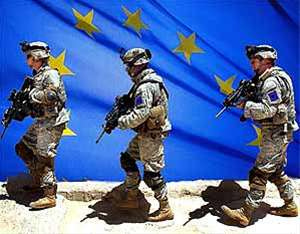Canada faces two program options in replacing its 79 operational CF-18 Hornets: replacing them entirely with 65 new F-35s at $17 billion to $45.8 billion or repairing the current Hornets. Currently, Canada has paid the latest payment to the F-35’s Joint Strike Fighter program, delaying the imminent decision the Liberal government faces in replacing the CF-18 Hornets with the F-35s: To buy or not to buy?
The decision is far from black and white. Since Canada’s first contribution in 1997, Canadian companies have secured an estimated US$812 million in contracts, and Lockheed Martin, manufacturer of the F-35 program, has stated that future contract work will be limited to those countries that purchase the fighters. However, analysts question the proposed long-term industrial value of the F-35 program, given the decreased order demand from other F-35 program partners, making each plane more expensive due to lowered production. This is notable considering the long term fiscal and political conditions in Europe and the U.S.
While the current joint program bars the application of offset policies such as Canada’s Industrial and Technological Benefits (ITB) Policy, could benefits from an offset policy possible through another contract present an attractive alternative, should the Liberals decide not to buy?
What is an offset?
In defence procurement, it is normal to supplement a contract with a side deal. This is known as an offset agreement, a common standard in large defence sales of contemporary defence systems which sees that a certain monetary value of a defence contract is invested back into the procuring country, either directly through working with their defence partners, or indirectly through contributing to more general social and economic goals. For instance, as part of winning the defence contract to sell Country A 50 ships at $500 million, Country B has been requested to fulfill an offset equal to 100% of the sale. In this example, the offset requirement can then be met directly through coproducing the ships with suppliers from Country A, or indirectly through a technology transfer of technological know-how to Country A, or variations of both indirect and direct offset avenues. In Canada, A Value Proposition guide is used to determine which proposal presents the greatest benefit to the Canadian economy and defence sector.
Offset Benefits: Obstacles
Achieving the promised benefits from an offset package is rarely simple. One issue is ensuring technological know-how is adequately transferred. The existing build-to-print model of contracted work makes this problematic as currently, there is not much to discourage short-term contract work given the relative capacity among Canadian suppliers to absorb large technological transfers and the security risks associated with large knowledge transfers. Another issue is the absorption of additional costs associated with offset packages. Suppliers may be required to work with contractors who may not be the most efficient or cost effective, bringing up the overall costs of the project.
Furthermore, regional benefits remain primarily concentrated in the “Golden Triangle” of central Canada given their capacity for absorbing technological transfers, export niches and established industrial relationships. Lastly, the Canadian procurement process cannot be divorced from Canada’s defence policy and economic climate; these constraints further affect the benefits accrued from offset packages. Continuing low oil prices may exacerbate regional differences in the defence market, as oil and gas companies, which established military branches during boom years, may struggle without regulation that supplies contracts to these regions. Eventually, these smaller, niche supply chains risk disappearing, narrowing Canada’s defence industrial base.
Big Decisions
Back to the F-35s: Given the current limitations of technological transfers and regional distribution of benefits; if the Liberals choose not to purchase the fighters, would an offset agreement built into acquiring another system be at least equal to the current benefits Canadian industries receive from participating in the F-35 program? While maintaining that the program bars offset policies from participating countries, past governments have justified the continued payments given the technological and industrial benefits from participating in the developmental stage of the sophisticated stealth fighters. To an extent this may be true. Investing in the Research and Development stage of a new defence system is the phase most likely to provide the majority of tech transfers, but not in the stage of actually acquiring the systems. In the case of the F-35, remaining in the program may face diminishing returns. At one point, continuing to forgo its ITB offset policy to reap the technological benefits from participating in the program may not justify a much cheaper alternative should the need come to finally replacing the Hornets. While the Liberals see continued benefit in participating in the F-35 program for a bit longer, diminishing benefits will force a choice. A strategy, through a formal offset agreement or not, that would allow Canada to establish a stronger military-industrial base through transfers of technological know-how could prove promising to the Canadian economy, especially in current export conditions where Canadian defence firms can leverage their capabilities with the lower dollar.
The Liberal government faces some tough procurement decisions; it will need to decide if continued investment in the Fighters would remain worthwhile or whether to opt out and consider other options that best meet Canada’s industry and military needs. Moreover, given relatively ideal export conditions, it still has to be seen whether the current ITB policy will allow for these marketed reimbursements from Canada’s military procurement program to be distributed efficiently across regional and industrial lines, assuming a sustained engagement in collective North American defence.
Photo: “Lockheed Martin F-35 Lightning II” (2013), by MSgt John Nimmo Sr. via Wikimedia. Public Domain of the United States Department of Defense.
Disclaimer: Any views or opinions expressed in articles are solely those of the authors and do not necessarily represent the views of the NATO Association of Canada.




